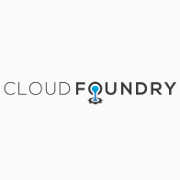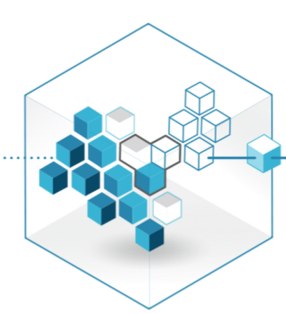| Why Predix Uses Cloud Foundry |
| Written by Kay Ewbank | |||
| Monday, 25 September 2017 | |||
|
Predix is GE's software platform for the Industrial Internet, and it is designed to handle big data at an industrial scale. When deployed in the cloud it relies the open source cloud application platform, Cloud Foundry.
Just what is meant by 'an industrial scale' is eye opening. As Harel Kodesh, Vice President, Chief Technology Officer at GE Software, pointed out at the Cloud Foundry Summit, a typical day's data for Twitter runs at around 80GB, whereas one airplane flight can generate 500GB of data. That 500GB of data produced on a single flight includes data about the engine, the vibration, the cabin temperature - everything about the flight. Around one hundred thousand flights every day happen in the United States, and GE deals with about seventy percent market share. As Harel Kodesh says: "We’re talking about seventy percent of one hundred thousand flights, times half a terabyte. I think in my math it’s about fifty petabytes a day. We’re talking about an unprecedented amount of information and for the first time in history, people actually know what to do with all this data. If you go and analyze that, you’re going to figure out how to build better engines, faster engines, how to make sure that the blades, the turbine blades, can actually last much longer. You have an end to end picture of everything that we’re building." Of course, GE Aviation is only one element of GE, but it provides an insight into the sort of industrial data analysis the company was doing. GE was already using nearly 20 Billion sensors in 2014, producing about eighty exabytes of data. The company expects this to increase to an estimated 80 exabytes of data by 2019. This data all needs to be ingested, stored, cleaned, and analyzed so GE can gain insights about how to efficiently operate and maintain their capital assets. The need to keep capital assets running is imperative for the Industrial Internet. Assets are expected to work day in and day out for maybe thirty or thirty-five years. Analyzed correctly, the data from all those sensors can be used by GE to figure out how to build better engines, faster engines, how to make sure that the blades, the turbine blades, can actually last much longer. This massive volume of data meant that when developers began working on Predix for GE, they couldn't find a cloud platform that could handle the velocity, variety and volume of industrial data from millions of machines. Most cloud platforms were built to handle the type of data generated by recording customer interactions or orders, whereas as the figures above show, the Internet of Things generates massively larger quantities of information. In addition to not being able to handle the volume of data, the developers of Predix also found that general business platforms didn’t offer the tools industrial developers need to work efficiently and cost effectively. Ryane Bohm, Developer Evangelist and Predix Builder Influencer, said: "At the time we set out to develop Predix, we couldn’t find a cloud platform that could handle the velocity, variety and volume of industrial data from millions of machines. In addition, they weren’t originally designed for industry’s security and reliability requirements. Finally, general business platforms didn’t offer the tools industrial developers need to work efficiently and cost effectively." Despite the inability to find a cloud platform, the developers working on Predix were sure a cloud platform was the way to go, firstly because of the ability it offers to take advantage of the economics of a centrally managed infrastructure via pay-as-you-go subscriptions. The right cloud platform would also let them connect assets across the entire business so that data and analytics can be captured then used for analysis at all levels of the organization. The decision was made that if a cloud platform wasn’t available to meet the needs of industry, GE would build its own. So that’s what they did. The team decided to use Cloud Foundry as the basis for their own custom platform. Cloud Foundry is an open source cloud application platform for developing and deploying enterprise cloud applications. It automates, scales and manages cloud apps throughout their lifecycle, supports a wide range of languages, and applications written in it are deployed in containers on multiple cloud infrastructures.
The developers of Predix wanted to create a system based on a “gated community” model to be used by tenants from the industrial ecosystem, where the tenants own their own data.The Predix cloud makes use of Cloud Foundry to give tenants access to a wide variety of microservices. Cloud Foundry is also used to provide a global secure cloud infrastructure optimized for industrial workloads and meeting regulatory needs. A further benefit of Cloud Foundry is its active developer community, and the GE Digital team is working closely with that community in the hope the platform can be developed further to meet advanced industrial needs. Ryane Bohm says Predix lets developers build apps in a fraction of the time taken in other systems, due to the combination of the sophisticated environment of Cloud Foundry, combined with the reusable building blocks of Predix microservices. Cloud Foundry supports a wide variety of programming languages, including Java, PHP, Python, Ruby, Node.js, Perl and Go. It is also integrated with numerous open source tools such as Apache Tomcat, Jenkins, Chef and Ansible. As a result, says Ryane Bohm, developers can work with the languages and tools they already know: "Cloud Foundry helps with everything from the initial architecture of an application, through code creation, automated function test, deployment and maintenance in production, enabling developers to build apps on Cloud Foundry in a fraction of time." The bottom line, according to Ryane Bohm, is that Cloud Foundry enabled GE Digital to build a cloud that is purpose-built for the Industrial Internet of Things, and one that meets the requirements of industrial customers. This means development teams don’t have to worry about enhanced security controls and other characteristics essential for Industrial Internet applications such as machine connectivity. Instead, development teams are free to focus on the application layer and what they actually want to achieve. More InformationRelated ArticlesBuilding A Digital Twin With Predix Predix - A Platform for the Industrial Internet Of Things IoT Anomaly Detection Using A Kalman Filter How to Authenticate a Device in the Industrial Internet of Things To be informed about new articles on I Programmer, sign up for our weekly newsletter, subscribe to the RSS feed and follow us on Twitter, Facebook or Linkedin.
Comments
or email your comment to: comments@i-programmer.info |
|||
| Last Updated ( Monday, 25 September 2017 ) |




